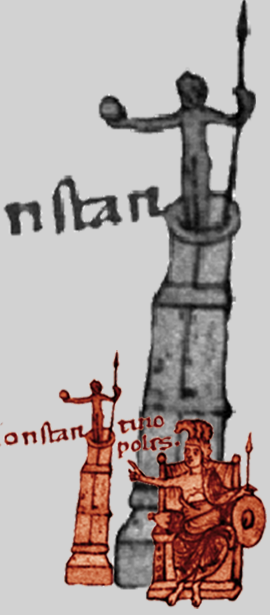Priests, Books and the Library at Saint Catherine’s (Sinai)
(FWF Project T 1192-G Firnberg-Programm, 01.12.2020-30.11.2023)
This project is in close cooperation with the research focus "Book culture, palaeography and palimpsests" of the cluster "Language, Text and Script".
Byzantine prayer books (sg.: euchologion; pl.: euchologia) written in Greek language are preserved in manuscripts dating from the late 8th century. They were used by priests during the liturgy or to celebrate a sacrament in the church, but also for performing various ‘occasional prayers’, i.e. prayers for occasions in everyday life that happened outside the walls of the church such as the blessing of fishing nets or a child’s first day at school. Privately owned by priests and often copied by them, the euchologia were used, studied, sometimes heavily annotated, and even carried on journeys by their owners. They are therefore the ideal candidates to give a voice to otherwise unknown stories of Byzantine priests and to know more about the cultural and social role they had in society.
The single largest collection of prayer books written in Greek is preserved at the library of Saint Catherine’s Monastery in the Sinai Peninsula. Founded in the sixth century, it holds the oldest Christian monastic library with an uninterrupted history. The 80 euchologia associated with the collection were copied between the 8th and the 18th century, and originate from a great variety of places, including Southern Italy, Egypt, Syria, Palestine, Crete, and Cyprus. The euchologia that are still preserved in Saint Catherine’s Monastery and those which during the 19th century were purloined and are now property of European and American collections (whole manuscripts or – more often – a few folia) constitute the research material for this project.
The aim of this project is the systematic analysis of this extensive corpus which has so far escaped the attention of scholars, except in singular cases. The euchologia will not only be studied for their liturgical content, but attention will be payed to their materiality as physical objects. The investigation of their codicological and palaeographical features, combined with the analysis of their content, will yield new information not only about their origin, but also and most importantly about the social and cultural life of their most common producers and subsequent owners, namely the Byzantine priests. By studying the marginal annotations in multiple languages, it will be possible to gain deeper insight into how and when the codices entered the monastery’s collection and which linguistic and liturgical traditions interrelated at the monastery (and when). The study of the Sinai prayer books will thus also contribute to a better understanding of the history of the entire Greek collection of manuscripts housed at the Monastery of Saint Catherine.
The work on this project stands in close collaboration with the Euchologia-Project.
Cooperation Partners
- Dr. Daniel Galadza, Wissenschaftlicher Mitarbeiter, “Beyond Canon” Centre for Advanced Studies, Universität Regensburg/Sheptytsky-Institut, Universität Toronto


